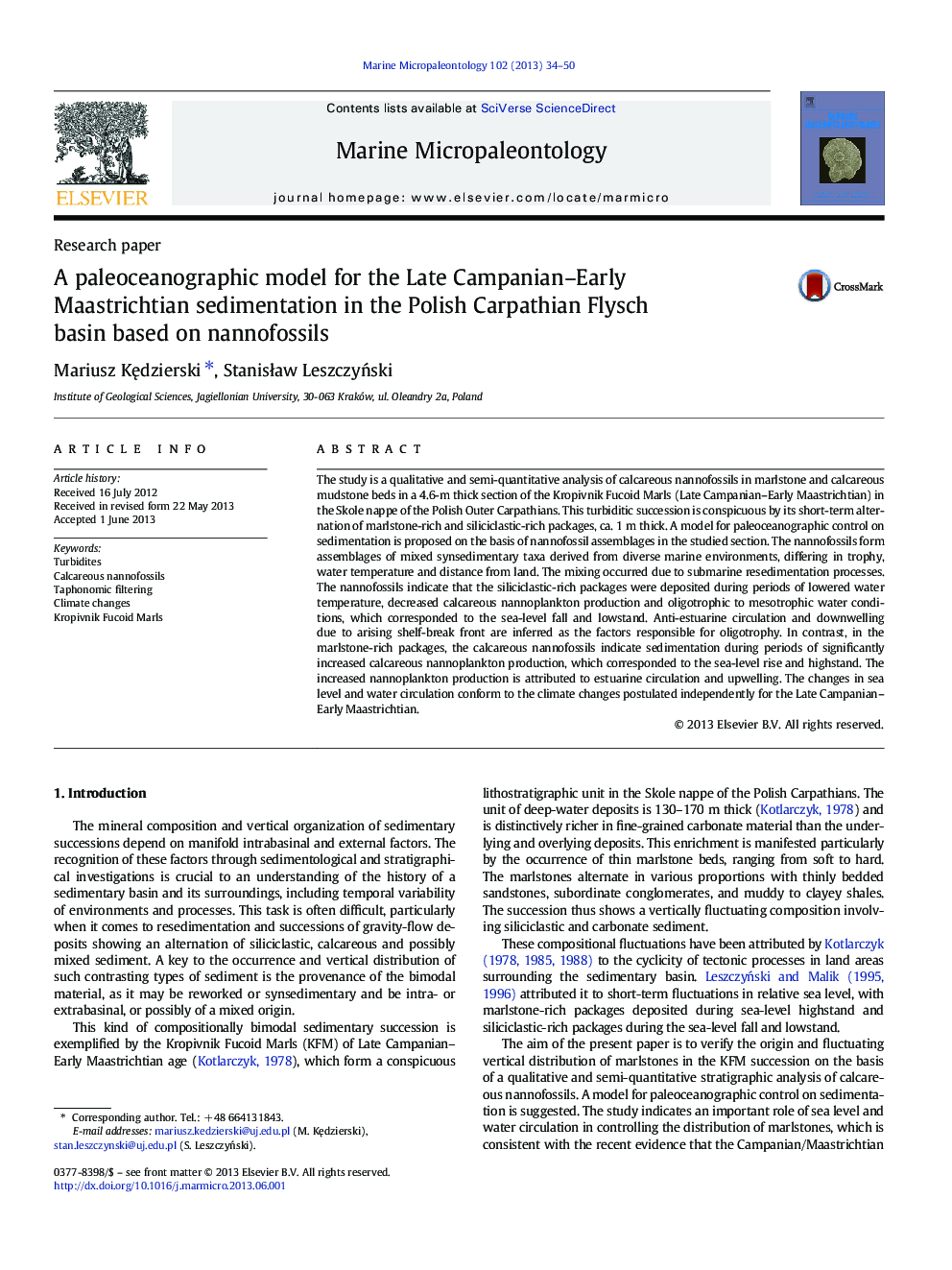| Article ID | Journal | Published Year | Pages | File Type |
|---|---|---|---|---|
| 4748915 | Marine Micropaleontology | 2013 | 17 Pages |
•Nannofossils in shelf-sourced turbiditic packages reflect sea-level changes.•Sea-level falls caused low carbonate production and oligotrophy in shelf zone.•Sea-level fall and lowstand activated anti-estuarine type of circulation.•Sea-level rises caused high carbonate production and meso-/eutrophy in shelf zone•Sea-level rise and highstand activated estuarine type of circulation.
The study is a qualitative and semi-quantitative analysis of calcareous nannofossils in marlstone and calcareous mudstone beds in a 4.6-m thick section of the Kropivnik Fucoid Marls (Late Campanian–Early Maastrichtian) in the Skole nappe of the Polish Outer Carpathians. This turbiditic succession is conspicuous by its short-term alternation of marlstone-rich and siliciclastic-rich packages, ca. 1 m thick. A model for paleoceanographic control on sedimentation is proposed on the basis of nannofossil assemblages in the studied section. The nannofossils form assemblages of mixed synsedimentary taxa derived from diverse marine environments, differing in trophy, water temperature and distance from land. The mixing occurred due to submarine resedimentation processes. The nannofossils indicate that the siliciclastic-rich packages were deposited during periods of lowered water temperature, decreased calcareous nannoplankton production and oligotrophic to mesotrophic water conditions, which corresponded to the sea-level fall and lowstand. Anti-estuarine circulation and downwelling due to arising shelf-break front are inferred as the factors responsible for oligotrophy. In contrast, in the marlstone-rich packages, the calcareous nannofossils indicate sedimentation during periods of significantly increased calcareous nannoplankton production, which corresponded to the sea-level rise and highstand. The increased nannoplankton production is attributed to estuarine circulation and upwelling. The changes in sea level and water circulation conform to the climate changes postulated independently for the Late Campanian–Early Maastrichtian.
